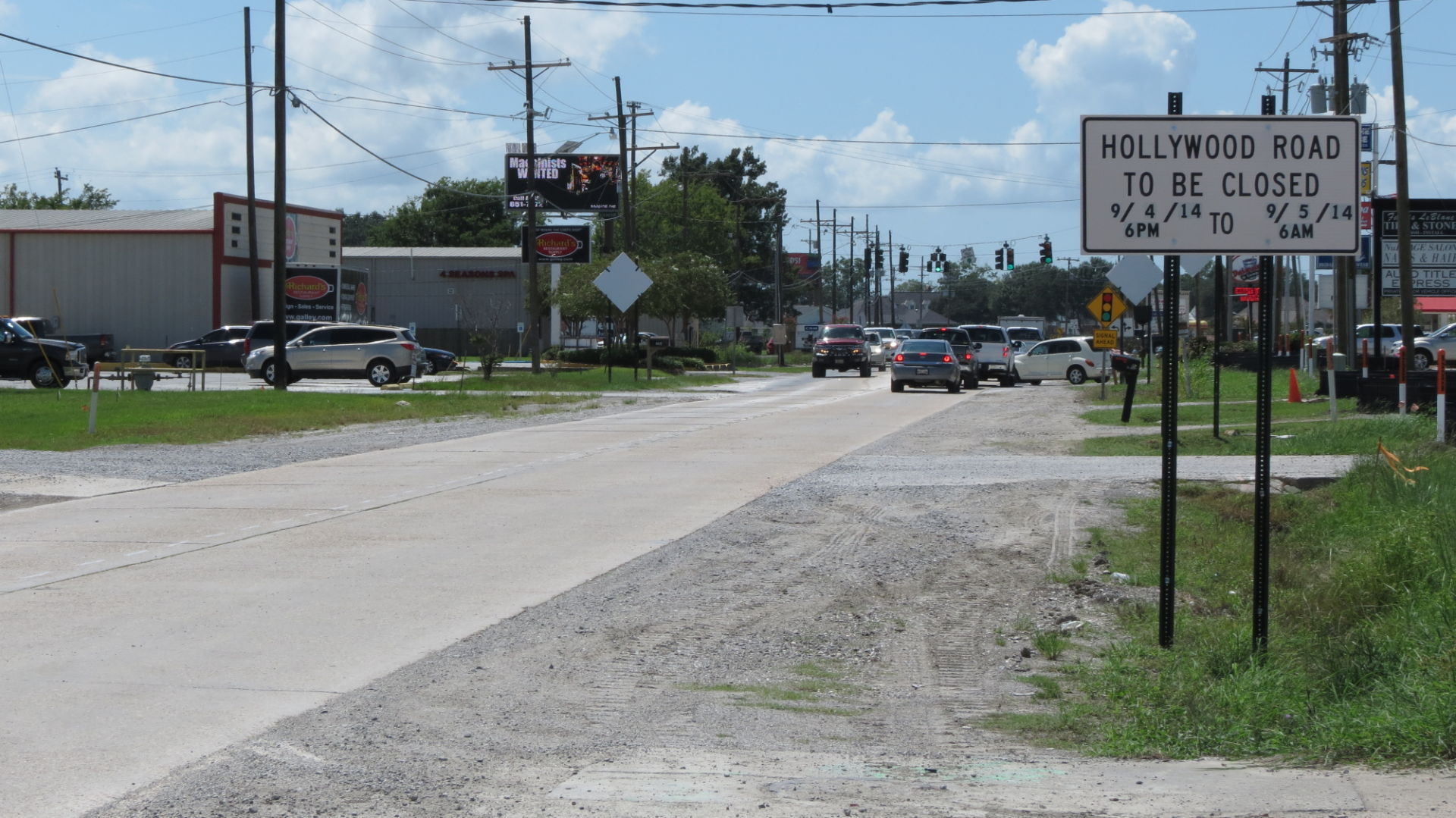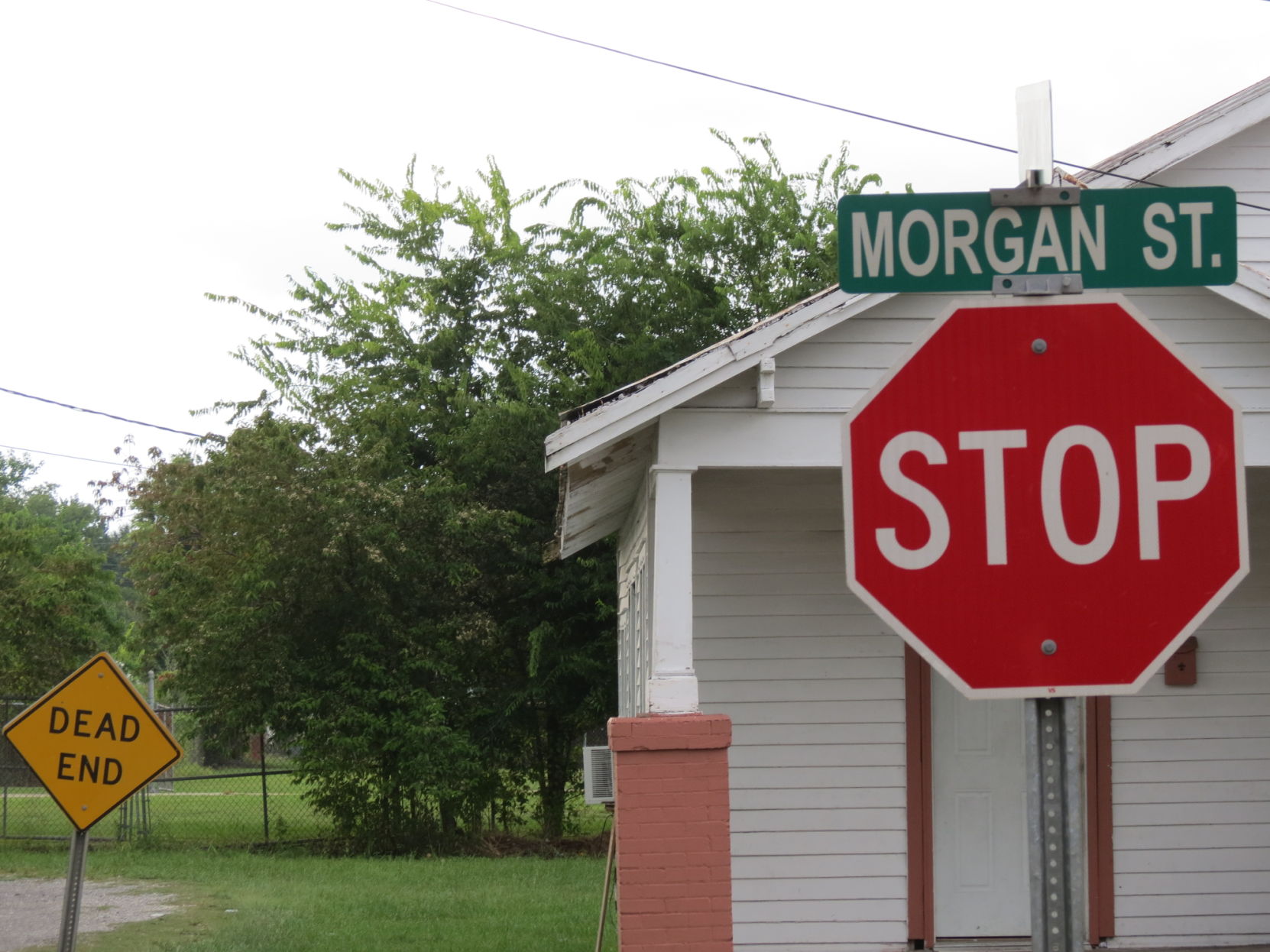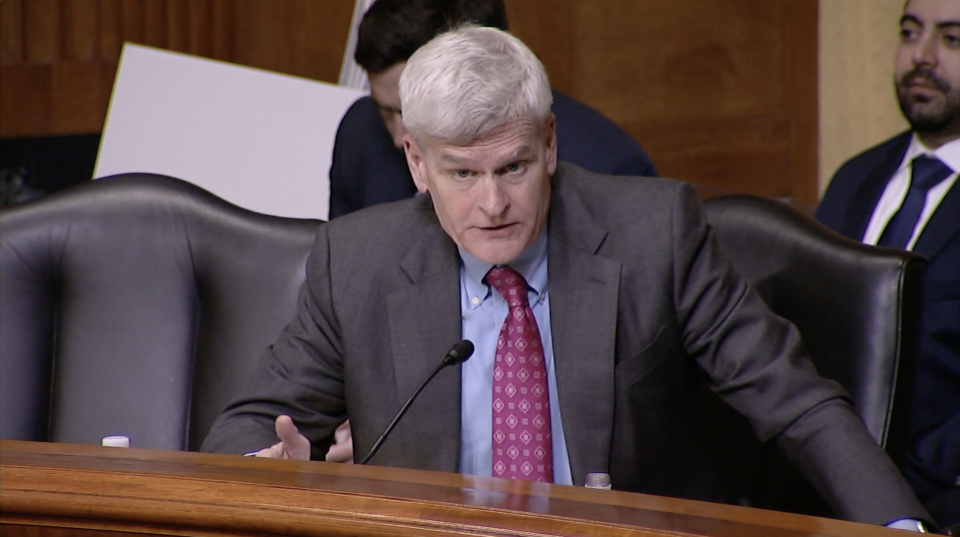
Gators smack HLB in mud-bowl; ascend to No. 1 in High-Five
September 9, 2014
S. Hollywood braces for improvement
September 9, 2014A flood of cocaine that turned some Houma streets into open-air drug markets and sparked unprecedented violence, authorities now reveal, was the result of an international distribution conspiracy that created a direct pipeline from drug cartel members operating in the U.S. and Mexico to a Terrebonne Parish street gang.
The last legal remnants of those troubled times are unfolding in the New Orleans federal courthouse, where Efrain Grimaldo, a member of the brutal Los Zetas cartel, was sentenced last week to 33 years in prison for cocaine distribution.
His brother, Sergio Grimaldo, was recently extradited from Mexico and is scheduled for a Dec. 15 trial. An associate, Sabino Duarte, who testified against Efrain Grimaldo and is expected to testify against his brother, has pleaded guilty and awaits sentencing on similar charges.
Interviews with Drug Enforcement Administration agents, local law enforcement officers, associates of convicted local dealers and court records provide, for the first time, a clear picture of how the drug cartel was linked to a local street-level drug posse. Up Da Bayou Boyz or UBB, whose members were rounded up in a series of raids by the Terrebonne Parish Sheriff’s Office, Houma Police Department and other local agencies, with the aid of the DEA, is the local gang.
The emerging portrait of the operation, local authorities say, is a prime example of how drug purchases on area streets directly and indirectly finance mass acts of violence in other nations, and murderous behavior within U.S. borders and beyond.
“A lot of people think the little people are the ones selling to your children,” Terrebonne Parish Sheriff Jerry Larpenter said. “But it is these big cartels that produce [illegal drugs] in mass quantities and distribute it across America like a blanket. The Mexicans sell to the local thugs, to your local people. And the bottom line is sometimes you have to make a lot of arrests … if it is not done locally, it is not done at all.
“It takes a lot of manpower and a lot of finances to work these cases for a long period of time,” the sheriff said. “We had been tracking these cases back to 2007 and this has been ongoing. We have arrested 70 people since around then and they traced it all the way back to the Mexican cartel.”
INNOCENTS ENDANGERED
Local prosecutors and deputies as well as federal agents squeezed UBB members one-by-one for information on the source of their product. Court records and other information show that gang members rolled over on higher-level distributors, at least one of whom supplied direct information leading to warrants for the arrests of the Grimaldos, who were already on federal agents’ radar.
“Efrain Grimaldo was responsible for importing massive quantities of cocaine into the United States, including communities here in Southeast Louisiana,” Kenneth Polite, U.S. Attorney for the Eastern District of Louisiana, said when the sentencing was announced. “As a member of the Los Zetas cartel, one of the most notorious criminal enterprises in Mexico or the United States, Grimaldo endangered the lives of innocent people on both sides of the border.”
Court records show that key players in the saga were involved to some degree in local drug distribution prior to the turn of the 21st century.
Edward Lester Talley and Mark Griffin, described as drug distributors active in the Houma area, were at a Houston motel on Dec. 6, 2000, when their rental car was broken into. Texas authorities already had the pair under direct surveillance. Lawmen had to move quickly once their targets were victimized, already knowing two kilos of cocaine and 106 pounds of marijuana were in the vehicle.
Both were convicted and served time in a Texas prison, where they made new drug contacts.
One of those contacts – believed to be a Honduran national – provided introductions to a Texas distributor from whom both men began purchasing cocaine after their respective releases in 2005 and 2006.
Talley has stated under oath that after his release, he met in Morgan City with a man named “Peter,” discussing how much cocaine he felt he could sell. Also at the meeting was a distributor named David Garza. The man named Peter delivered to Talley five kilos of cocaine, while Garza delivered 12 kilos to him, all sold to Talley for around $7,000 per kilo.
Garza and “Peter” continued supplying Talley through 2007 at least.
During that time, Talley has stated, it was his understanding that cartel member Sergio Grimaldo was the supplier who provided Garza and Peter with the product. Griffin, considered a close associate of some Up Da Bayou Boyz gang members, got to work almost immediately, unloading product in Houma, court records show.
STANKEYLEG
From 2006 through at least 2008, Griffin and Talley traveled frequently from Houston to Houma, moving anywhere from 5 to 13 kilos of cocaine per trip – street value very roughly estimated anywhere from $100,000 to $260,000. Not all the product ended up in Houma. Some was sold in other communities.
Authorities became aware of the trafficking when Garza was arrested in Houston and gave detailed information on people from his client list. As federal authorities probed Griffin and Talley, agencies in Terrebonne monitored the escalating drug dealing activity, placing pressure on UBB members and other local street dealers.
Talley and Griffin were known, but authorities were initially unaware that Talley had made low friends in some very high places.
Talley’s first meeting with Efrain Grimaldo occurred because the cartel member wanted to clear up a problem. Talley had paid Garza’s wife money for a cocaine shipment; Grimaldo, according to court papers, wanted Talley to know that the money was actually his, interpreted to mean that Efrain Grimaldo was the upstream supplier, along with his brother.
Efrain Grimaldo, court records indicate, was not only overseeing distribution in Louisiana and Texas, but was responsible for cocaine that traveled to Florida, Mississippi, Alabama and New York. He traveled frequently between Mexico and Texas, using fake identification in many cases.
Talley more often received his cocaine from confederates working below Grimaldo, including a man identified in available court records only as “Stankyleg.” The cocaine was transferred to Talley, court papers state, secreted in the special hiding places crafted in vehicles, including a Ford Taurus and Nissan Titan. Couriers would drive the vehicles containing the cocaine to Houma from Houston.
Members of Houma’s by-then ubiquitous UBB would likely have had no way of knowing the product they peddled on city streets came from an organization internationally feared for its ruthless acts of violence.
CASTRATION, BEHEADING
In 2003, the Mexican government branded Los Zetas, founded in the 1990s by 31 highly trained military deserters sworn to defend the leader of another criminal organization initially, as “the most formidable death squad to have worked for organized crime in Mexican history.”
They are one of two major cartels currently at war with each other as well as their government and military. Intelligence reports available through the U.S. National Criminal Justice Reference Service show an arsenal that includes grenade launchers and at least one helicopter.
A report issued this year by the U.S. Army War College Strategic Studies Institute notes a reputation for “sadistic treatment of foes and friends.”
Its leaders, analyst George Grayson states in that report, have “thrived on beheadings, castrations, stewing their prey in gasoline-filled vats, and other heinous acts. They make sophisticated use of social media and public hangings to display their savagery and cow adversaries. The reputation for the unspeakable infliction of pain has enabled these desperados to commit atrocities in a score of Mexican states.”
The organization has gone far from its original elite structure, more recent analyses indicate, and includes a large network of criminals who function in both Mexico and the U.S.
Court records indicate Efrain Grimaldo, who has no known military background, is one of those wanted men. His direct connection to Houma was Talley.
In addition to Griffin, Talley’s Houma associates included Jerome Scott and Corey Douglas, the latter believed a founder of UBB.
One of the first higher level dealers to end up in custody was Scott, who in 2008 lived with his family at addresses on Columbus Street and Smith Lane, all within the UBB area of influence, where community leaders and police were fighting a war against “tagging” – gang graffiti – announcing the existence of the swaggering UBB. Their loose-knit membership and hangers-on wore red as a primary color, the one associated with Houma “west side” gangs.
Police had also already begun a war against street-level drug sales and whomever they could make cases against that were more highly placed.
RESTROOM RENDESVOUZ
A Raceland informant later identified by neighborhood sources as Scott’s relative provided the Judas kiss for him. The informant was already working as a confidential source for the DEA, which was still not aware of the Houma-Los Zetas connection but trying to learn more about the source of Houma’s cocaine.
What the undercover work provided was formidable by local street standards. The snitch arranged to meet Scott, nicknamed “JJ,” on Jan. 28, 2008, at the Popeye’s restaurant on Martin Luther King Boulevard in Houma but plans got changed. Scott was told instead to meet at the BP gas station near Lafayette Street and Tunnel Boulevard, where Scott sold 4.5 ounces of cocaine base for $3,200 in the men’s room. The informant, who was wearing a wire, brought the drugs to officers and it was entered as evidence.
On March 25, 2008, Scott and the informant met again, at a barbershop on Main Street, from which they drove in separate vehicles to the Smith Lane residence.
Scott entered the house and emerged with 36 grams of cocaine base, which he sold for $960. Detectives later obtained a warrant for Scott’s arrest and searched the Columbus Street house, which he shared with his mother, and a home on Authement Street, which he shared with a girlfriend.
Suzie Kenny, also known as Suzie Nixon, Scott’s girlfriend, was charged with possession with intent to distribute.
Seven ounces of cocaine and nearly $40,000 in cash were seized on Columbus Street, $20,000 wrapped with black electrical tape and the rest in a Ziplock bag. Valerie Scott, his mother, was also charged with crimes involving weapons and possession.
Accounts provided by Special Agent Debora Webber of the Drug Enforcement Administration’s New Orleans office indicate that another address, on Grinage Street, was recorded. The raids were conducted over a two-day period, eventually netting more than $200,000 in cocaine.
Chance Franklin, an associate of Scott’s who lived at Grinage, was charged with conspiracy to distribute. He had been a target since 2007. Informants made drug buys from him more than a year, according to legal records.
LASER SIGHT
Violence and drug sales continued defining some Houma neighborhoods in 2009. But other dominos in the chain of supply and sale began to fall. Increased violence on the streets brought additional official scrutiny, meanwhile.
Corey Douglas, an associate of Scott and other alleged conspirators, already had a reputation as a troublemaker, racking up contacts with local police dating back to high school.
At the age of 23, he was among those arrested during a 2005 disturbance at a Houma Civic Center basketball jamboree. Local officials downplayed the potential that gang rivalries might have played a role in those incidents at the time.
Local cops and the feds had Douglas on their radar already because of disclosures made by other people who were previously arrested, including UBB members. But it was a simple traffic stop due to an error on Douglas’ part that got him taken into custody.
On May 19, 2009, shortly after 11 p.m., city police observed a gray Chevrolet with a Michigan tag traveling with its headlights off. The officers who stopped the car noticed a strong odor of marijuana, according to court papers. Douglas was driving; a woman named Tyranika Mosely was in the front passenger seat, and in the rear was another woman, Jacqueline Matthews, along with two children.
After questioning from officers, Douglas agreed to a search. Officers found a bottle of liquid codeine and a Glock 0.40-calibre pistol with a laser sight under the front seat. A purse at Mosely’s feet contained what was described as a large amount of cocaine, both powder and base. The car stop had drawn a crowd and officers interrupted the search to handle the commotion. When the search resumed, they found a half-burned marijuana cigarette. Douglas was charged with federal drug violations.
As prosecutors pieced their case together, Griffin and Talley continued their distribution, receiving shipments hidden in vehicles and through other means.
JUDGMENT DAY
Gunplay on Houma streets, sometimes over real or imagined slights between hoodlums, at other times because of beliefs that a person was snitching, became more frequent.
On July 3, 2009, 31-year-old Robert Mitchell was shot and wounded when a fusillade of bullets was fired from an automatic weapon; police developed leads that told them Mark Griffin was responsible and a warrant was issued for his arrest.
A month after Mitchell was shot, 22-year-old Steven Sneeze of Lafayette Street was fatally shot at the corner of Canal and Academy streets, steps away from the location of the July shooting. Although relatives of suspects and the victims denied it, police maintained that there was a connection to the earlier incident.
Chris Anthony Frank, John Calvin “Bones” Frank and Keidrike Ayo were apprehended for the fatal shooting and all were charged with first-degree murder.
A hunt for Griffin in connection with the Mitchell shooting continued through the fall, but in the meantime things got hotter.
Task force members from the Louisiana State Police, the DEA, the Terrebonne Sheriff’s Office, Houma police and other agencies broke the back of the UBB on Aug. 26, 2009, in a sweep they called “Operation Judgment Day.”
Overall, 15 people were arrested, primarily in the vicinity of Columbus Street. In some cases, only small quantities of drugs and a few weapons were found, but in a number of instances cases had already been made through undercover sales.
As arrests of UBB members were made, various defendants fingered Talley and Griffin as suppliers. In some cases undercover operations were set up, and associates of Talley and Griffin were arrested.
Federal authorities were also getting indications they could identify suppliers of even greater importance. As undercover operations continued in Houma, various other communities in Florida, Alabama and elsewhere were yielding evidence tying huge amounts of cocaine to Mexico’s Los Zetas cartel.
Key to the plans for major prosecution would be the arrests of Griffin and Talley.
Again, it was a car stop that led to a major takedown.
SUPPLIER TURNS SNITCH
On Sept. 16, 2009, Houma police observed an automobile blocking a roadway and attempted to approach. The driver took off, leading police on a high-speed chase during which a bag – later identified as containing cocaine – was tossed from a window.
The driver stopped and officers identified him as Edward Lester Talley; he was carrying two additional bags of cocaine.
He immediately broke.
“Upon surrendering, Talley told the arresting officers that he was willing to cooperate and had been in the game for a long time,” a court document states. Talley identified his supplier, and the investigation continued. Talley’s statement corroborated information supplied by a “known cooperating defendant,” Sabino Duarte, known by the nickname “Shorty.”
In December 2009, Terrebonne Narcotics Task Force officers got a tip disclosing the whereabouts of Griffin. They found him at a house on Scott Lane, but he tried to escape in an automobile, resulting in a brief chase. Griffin had bailed from the car and was found in a ditch near St. Louis Canal Road, from which he was taken into custody.
In addition to the information garnered from the UBB directly, investigators had pored through cellphone records, which contained hundreds of calls between Griffin, Talley and the lower-level distributors.
THE FUGITIVE
By 2010, authorities were ready to move on the Grimaldo brothers and Shorty.
Indictments issued April 21, 2011, and warrants were issued for the Grimaldos. Shorty was already in state custody, and was transferred to the feds.
On an undisclosed date in 2011, Efrain Grimaldo was taken into custody in Houston on a fugitive warrant. He had been using the name Aradael Mercado Estrada, which appeared on a driver’s license.
His brother was arrested in Mexico at a later date and extradited to the U.S.
The trial of Efrain Grimaldo lasted three days, presided over by District Judge Sarah Vance, resulting in a guilty verdict. Vance imposed his 33-year sentence last week.
Since the cocaine supplied by Efrain Grimaldo and his cartel first seized central Houma in its death-grip, much has changed. Heroin is now the drug making headlines and has sparked a new wave of local violence as dealers more sophisticated than the UBB street soldiers gain their footing and rank.
But the raids, arrests and eventual prosecutions of those in the Los Zetas supply chain have, according to agents on the front lines, made a difference.
Susan Nave, Special Agent in Charge of the New Orleans DEA office, said at the very least, the Grimaldo cases and those related to them have crimped the ability of the Los Zetas to move their products in the region.
“It impacts their ability to move things into the U.S.,” Nave said, adding the greater impact is ultimately on the lives of people in Houma and surrounding areas.
“In the smaller towns and smaller venues, when the drugs come also comes the violence,” Nave said. “What happened in Houma is they got a great handle on it when they dismantled the UBB. There was a great cause and effect.”
EPILOGUE
During interviews related to this article some relatives of people arrested in the Houma sweeps expressed concern after learning of the cartel connection to the cases. Nave said locals should not be afraid, however.
Anyone related to the direct distribution of the drugs in Houma, she indicated, is now serving time.
While the UBB graffiti is gone from city streets, traces of the gang’s existence remain visible in other ways.
At least two videos telling the UBB’s story through rap songs remain on YouTube.
“They’re nothing but thugs, wannabe thugs who don’t want to work and would rather rip off society,” is how Sheriff Larpenter describes the UBB, vowing that his deputies, when necessary in concert with other agencies like the DEA, stand ready to escalate the battle against street-level illegal drugs if need be` and are eager to press the fight. “We are going to continue. There are too many good people in our neighborhoods, and they deserve to be protected.”
Morgan Street and other blocks in this neighborhood endured violence and outdoor drug sales a few years ago. Police raids flushed local dealers and led to prosecution of high-level offenders.
















